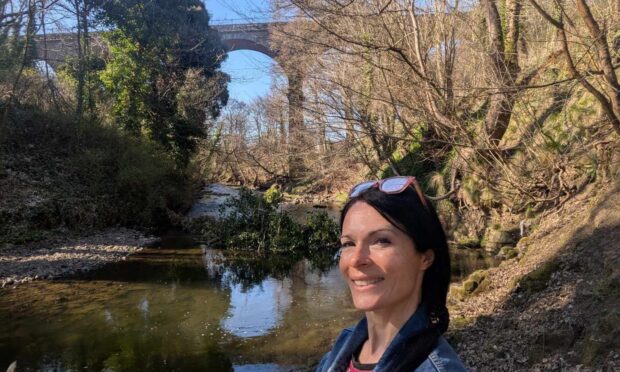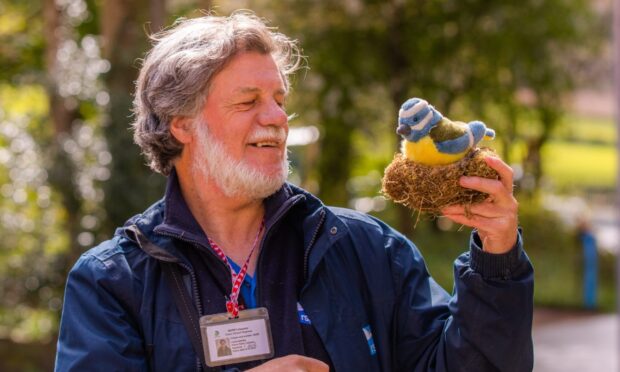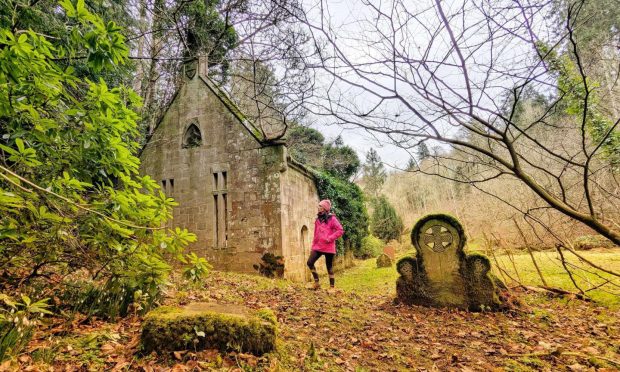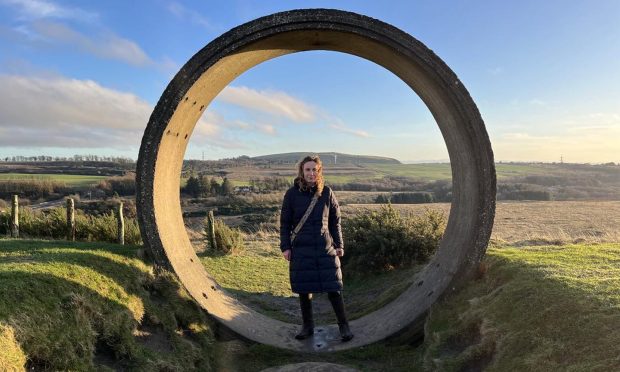The Dighty Valley is a happy place to hang out when the weather is kind.
As I wandered along a path that runs along the namesake burn, I felt a sense of joy wash over me.
The sun was shining, birds were tweeting in the trees, and I paused to watch as a lady and her grandson threw sticks into the water for their energetic golden retriever to fetch.
Their ‘launch pad’ was a gorgeous little beach, slightly downstream of the imposing Balmossie Viaduct – also known as the Seven Arches Viaduct.
I gazed up in wonder at the engineering marvel, and imagined steam trains chugging and rumbling across it, as they did for almost 100 years.
The A-listed red stone structure stands alone in the leafy valley, rising to a height of 75 feet.
What’s the history of Seven Arches Viaduct?
It was originally built in 1870 for the Dundee to Forfar railway line of the Caledonian Railway and provided a direct link to the agricultural hinterland.
The 17 mile route swung away from the main line at Broughty Ferry and headed north, with journeys taking an hour and five minutes.
The last passenger service ceased in 1955, although freight continued to run on the line until 1967.
In 1988, the viaduct was sold to Dundee District Council for the princely sum of £1.
Today, it forms part of a network of paths, well used by walkers and cyclists, that connects the area to Monifieth and beyond.
A friend referred to the viaduct as ‘ghostly’, and while I didn’t see, or feel, any phantoms or spectres, I couldn’t stop thinking about all the people who had travelled across the structure over the years.
Surely many of these people are no longer with us.
Disaster
Disaster was averted in 1893 when excessive heat caused the rails on the viaduct to twist almost into a “half circle”.
A train crossing it narrowly avoided plunging down into the embankment.
A report in The Courier on June 19 that year stated: “When crossing the viaduct over the Dighty at Balmossie, it was brought to a sudden stop, causing passengers to be thrown violently against each other.
“It was found that the rails were twisted almost into a half circle, supposed to have been caused by the excessive heat.
“Several of the passengers were severely shaken.
“The train was in danger of being thrown over the embankment which result was only averted by its stopping.”
Hidden history of Balmossie
The area is steeped in history. Not far from the viaduct there was once a small chapel, a mill, the famous Panmurefield bleachworks – and even a tomato factory.
The chapel, which stood on a crag opposite Balmossie Mill, was said to have boasted a bell hanging from a tree that called monks to prayer.
And the story goes that the Bell Tree pub in Broughty Ferry was named after this.
Follow the Dighty and you might spot remnants of the past – huge pillars sticking out of the water are thought to have been used as supports for the bleach works.
And as far as I can work out, wire fence structures were used to dry the bleached cloth.
There are loads of remaining bits of masonry connected to the bleach fields scattered in the woods along the burn, and a field once hosted ‘tomato houses’.
Dighty powered huge industry
It’s mind-blowing to think that the Dighty burn once provided power for more than 30 mills and bleach fields.
Indeed, Panmurefield was one of three main bleach works that survived into the 20th Century, the others being Claverhouse and Midmill.
Bleaching was the last stage in the production of linen cloth.
The process was essential to ensure textiles were clean, bright, and ready for use in various products.
The bleachfields required supplies of fresh water – the Dighty – and open fields for laying out the cloth.
What wildlife and tree species can you spot?
Those industries have long since declined, but the heavily wooded valley is a great place for wildlife.
If you’re lucky you might spot deer, otters, kingfishers, dippers, ducks and more.
Certainly, the Dighty Valley from North Balmossie Street forms a lovely green ‘corridor’ to the south towards the Seven Arches Viaduct.
The wooded den boasts a dense canopy of trees, ranging from mature ash to holly, which is home to small birds galore, including blue tits, great tits, and tree creepers.
Other species found include beech and sycamore which have slowly encroached over the years.
On the other side of the burn, small plantation areas feature species such as alder, willow and Norway Spruce.
There’s also rose, elder, hawthorn and blackthorn, which provide a great source of food for goldfinch and yellowhammer.
Further down the valley, there’s a series of open meadows and small woodland plantations which boast dramatic displays of cowslips in spring.
Walking opportunities galore
Having enjoyed my low-level potter down by the burn, I tackled the steep steps leading up to the viaduct, and took the time to peer down into the abyss.
The views are great, but anyone with vertigo might not want to look down.
Those who fancy a short, circular walk can follow the directions for the Balmossie Health Walk – you can download this on Dundee City Council’s website.
This 1.5 mile walk is described as a “pleasant circuit with a ‘countryside’ feel and tempting byways”.
Starting in North Balmossie Street, this takes you on a loop which eventually circles back to the viaduct.




















Conversation